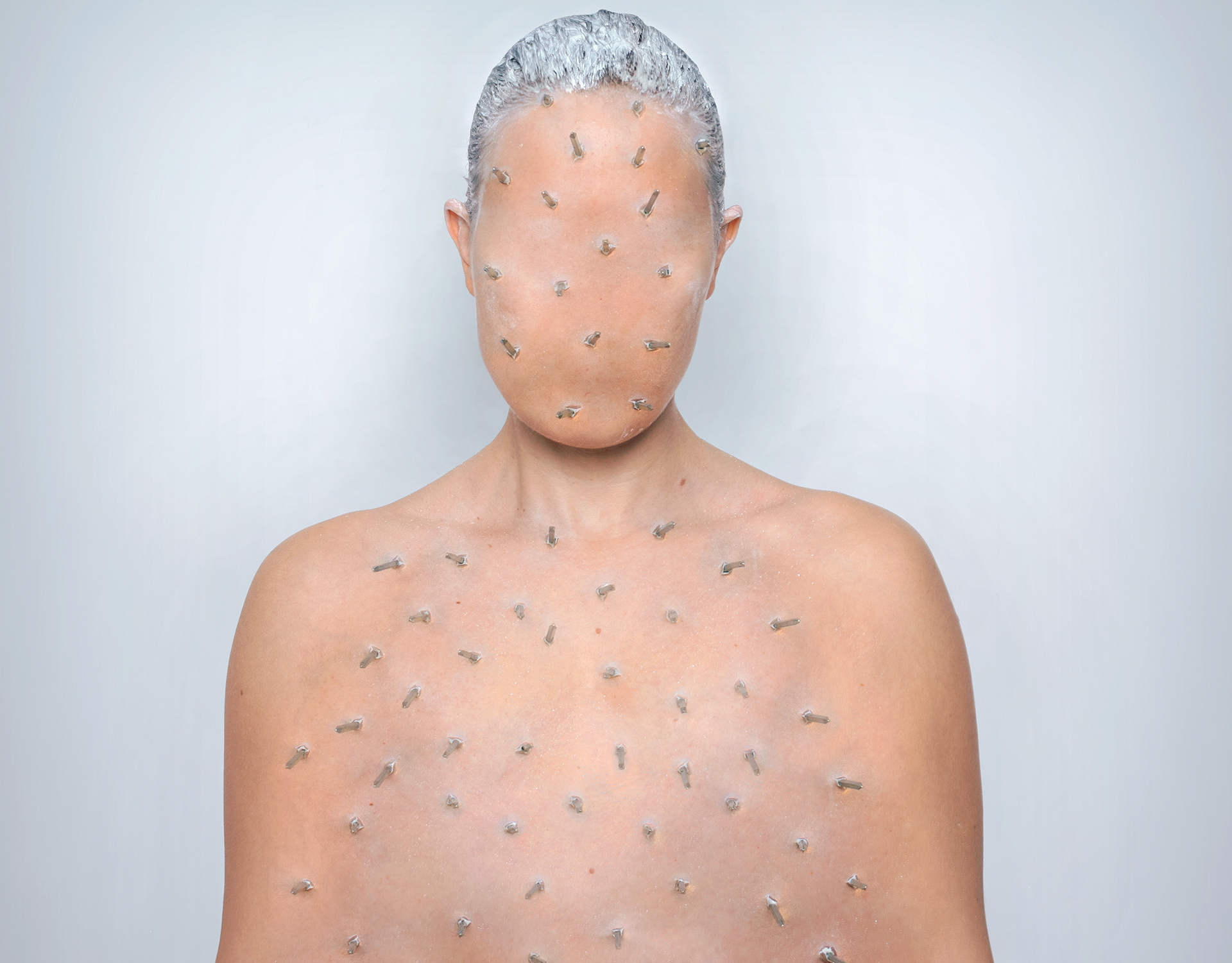In my graduation project on photography-basis, I turned my focus on what it means to be an animal, in a world where humans sets the agenda and what animals go through to fulfill human needs. The focus here was on farming animals. Organic, free range and conventional.
This is not an anti omnivore project, but a critical view on an industry that has changes dramatically in the last century. An industry most of us never really think about and often take for granted. The project is called "ANIMAL" and it will be an ongoing project.
Milking
In nature, cows can live to become around 25 years old. Cows have a well-developed social behavior and communicate with each other via eg. body postures, sounds and smells. In nature, the calf will die with the cow for 9 - 12 months before weaning. If the calf is female, cow and calf will stay together for the rest of their lives.
For a cow to produce milk, it must have given birth to a calf, and to keep producing milk, it must have a new calf every year. The cow gets a 2 months break from milking before calving and then the cow is milked again. The calf is usually taken from the cow a few days after calving. Mastitis is frequent, as the animals are milked several times a day. Therefore, dairy cows get a lot of medicine. In 2017, approx. 10.5 tons of antibiotics was used for dairy cattle in Denmark.
Most dairy cows in Denmark are slaughtered after 3-4 years because they produce less milk with age. Virtually all dairy cattle in Denmark are dehorned - also organic. This is done to reduce the risk of injury between the animals and the stable workers. The procedure itself is performed under anesthesia, with a 600 degree celcius hot iron that burns the horns off. The procedure is performed when the cows are about three months old.
An average cow produces 9,000 kg of milk annually, or 25 - 40 liters a day.
72% of Danish dairy cows never see grass. Thousands of bull calves are killed every year shortly after birth, as they cannot be used in the production chain.
Free Range Eggs
Chickens thrive best in flocks around 10 individuals and preferably somewhere between forest and open landscape. The food consists of what they find on the ground, such as grain and worms. If their natural behavior is not fulfilled, they become aggressive and choppy.
Free-range hens go in flock sizes of 3,000-15,000 individuals. Before the hens are included in the production, they are reared without perches and access to bedding to chop, scrape and bathe in.
After a while they are sent to a production house. In the stable there must be nests, perches and bedding in at least 1/3 of the floor area. They can be up to 9 hens per m2 and there is no requirement for daylight in the production house, but they are entitled to an outdoor area of 4m2 per hen, when weather permits it. It is allowed to trim the beak as long af it happens before they are 10 days old. The feed is conventional. A free-range hen lay around 274 eggs in one year. Thereafter it is slaughtered or sold.
Sheep Sheering
Tame sheep are bred not to shed their fur naturally. This has been a way of making them dependent on people. Most sheep in the wool production are bred to grow significantly more wool than ordinary sheep. Sheep shearers around the world often get quota payments and this can result in unintended wounds on the sheep as the shearing procedure simply goes too fast. In Australia, it is common to cut off large parts of the skin on the buttocks to avoid feces in the fur and to avoid potential infections.
The procedure is performed without anesthesia and is called Mulesing. About 3,000,000 sheep go through this procedure annually. Instead of fur, scar tissue will be formed around the buttocks of the sheep.
Australia is the world's largest producer of merino wool. About 400 million kg are used every year in clothing worldwide. Also in Denmark.
Elimination
About 3,500,000 male chicks are destroyed annually in Denmark, immediately after hatching, as they cannot lay eggs and do not have value as slaughter poultry. In Denmark they use CO2 gas for the procedure, whereafter the chicks will be used for feed in zoos and pet stores. Other places in the world, e.g. in the United States, the animals are killed with an apparatus that contains fast-rotating mechanically driven blades - what we call a blender in everyday use. This is done while the animals are at full consciousness.
In Belgium, about 15 million day-old chicks are killed each year, while the number is around 45 million in Holland.
A sorting employee can sort approx. 3,000 chickens per hour. The industry is currently researching in a solution to determine the gender before hatching.










